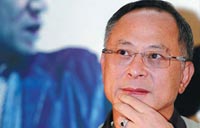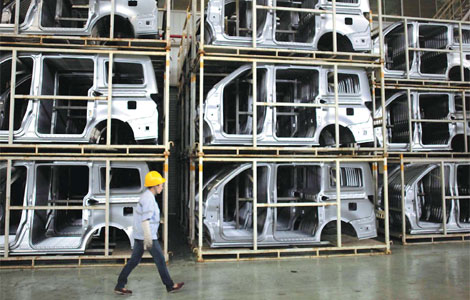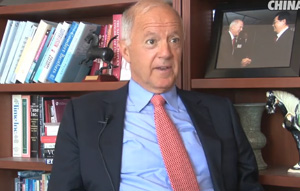The eternal truths of art are on show
Updated: 2013-06-09 09:11
By Zhang Kun in Shanghai (China Daily)
|
|||||||||||
 |
|
Sparrow is a video project of seven minutes, taken from Johnnie To's feature movie of the same title. Provided to China Daily |
 |
Participants are not only established artists such as China's Yang Fudong and Hu Jieming, big-budget commercial movie director Johnnie To, but also include Japan's Ryoji Ikeda and Belgium's Marnix de Nijs.
Yang, a Shanghai-based contemporary visual artist, has created projects that resemble feature movies.
"The definition of 'new media art' has kept expanding as technology has developed, and now the boundaries are very blurred," says Li Zhenhua, curator of the show, who has been active in the international art scene since 2008.
According to Li, Chinese artists have always explored new possibilities and new media.
"It's all about creativity," Li says. He has borrowed the exhibition name from Michael Naimark, an American researcher invited by the Rockefeller Foundation in 2010, to do laboratory experiments on art and media.
According to the research, truth, beauty, freedom and money are the most high profile elements in art. Li believes that although many things have changed in the social media era, the core of art remains the same.

Li believes that in the era of social media, everyone can participate in art or interact with it. It can happen in the museum, in virtual space, in the elevator or the bus, even with "the data in electric circuits", he says.
Belgian artist Marnix de Nijs presents a robot with feelings, for the exhibition. It is an interactive installation composed of a revolving mechanic arm with digital censors on the tip.
It feels the approach of the audience, follows their movements and makes sounds like a toy dog would do.
But when people come too close, or there are too many people around, it "freaks out" and revolves rapidly at up to 100 kph, while making sharp noise, 100 decibels loud. A "sensitive creature", as Li describes it.
Related Stories
Beijing Opera performance to make Tunisian debut 2013-06-08 15:17
Traditional style aims to capture beauty of nature 2013-06-08 10:34
Expressing the essence of life 2013-06-08 10:34
The culture of Chinese small living goods 2013-06-07 15:07
Paintings about the Dragon Boat Festival 2013-06-07 14:39
Today's Top News
China, US committed to newly-defined ties
Li: Growth will remain stable
Forum puts Chengdu on the map
Top execs to lure Chinese buyers
Chinese, US presidents meet for first summit
Police: Gunman killed 4 in California shootings
Suspect in fatal bus fire identified
Liu Zhijun to stand trial on Sunday
Hot Topics
Lunar probe , China growth forecasts, Emission rules get tougher, China seen through 'colored lens', International board,
Editor's Picks

|

|

|

|

|

|





